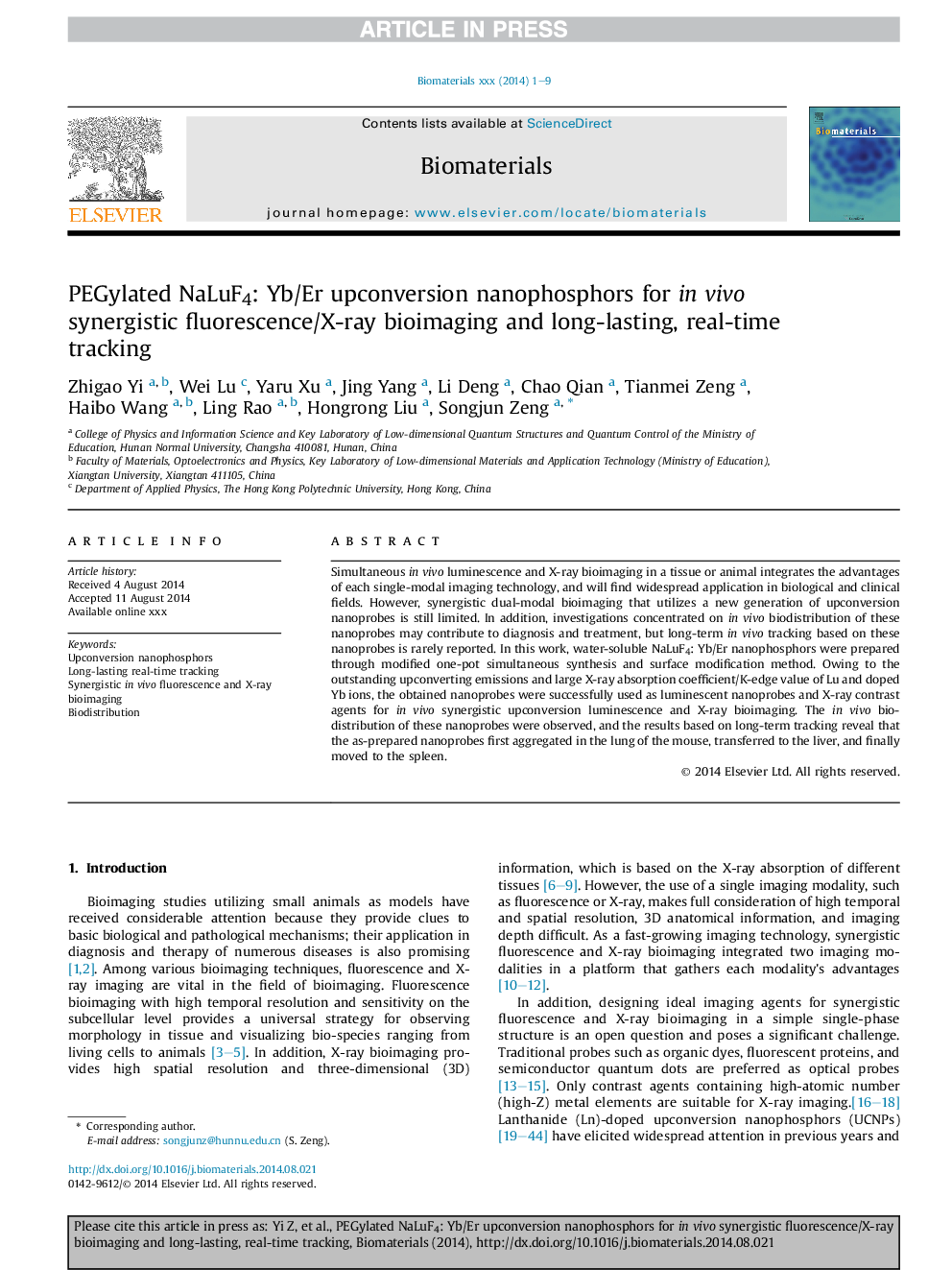| Article ID | Journal | Published Year | Pages | File Type |
|---|---|---|---|---|
| 10227184 | Biomaterials | 2014 | 9 Pages |
Abstract
Simultaneous in vivo luminescence and X-ray bioimaging in a tissue or animal integrates the advantages of each single-modal imaging technology, and will find widespread application in biological and clinical fields. However, synergistic dual-modal bioimaging that utilizes a new generation of upconversion nanoprobes is still limited. In addition, investigations concentrated on in vivo biodistribution of these nanoprobes may contribute to diagnosis and treatment, but long-term in vivo tracking based on these nanoprobes is rarely reported. In this work, water-soluble NaLuF4: Yb/Er nanophosphors were prepared through modified one-pot simultaneous synthesis and surface modification method. Owing to the outstanding upconverting emissions and large X-ray absorption coefficient/K-edge value of Lu and doped Yb ions, the obtained nanoprobes were successfully used as luminescent nanoprobes and X-ray contrast agents for in vivo synergistic upconversion luminescence and X-ray bioimaging. The in vivo biodistribution of these nanoprobes were observed, and the results based on long-term tracking reveal that the as-prepared nanoprobes first aggregated in the lung of the mouse, transferred to the liver, and finally moved to the spleen.
Related Topics
Physical Sciences and Engineering
Chemical Engineering
Bioengineering
Authors
Zhigao Yi, Wei Lu, Yaru Xu, Jing Yang, Li Deng, Chao Qian, Tianmei Zeng, Haibo Wang, Ling Rao, Hongrong Liu, Songjun Zeng,
